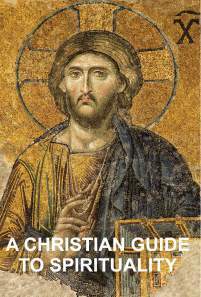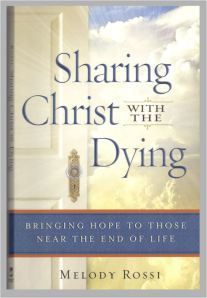Stephen W. Hiemstra's Blog, page 281
October 8, 2014
Sufrimiento

Art by Stephen W. Hiemstra
“padeció bajo el poder de Poncio Pilato; fue crucificado, muerto, y sepultado”[1]
Por Stephen W. Hiemstra
¿Por qué nos preocupamos por el sufrimiento de Cristo en la cruz?
El Apostól Pedro lo dijo mejor: “porque por Sus heridas fueron ustedes sanados.” (1 Peter 2:24 NBH) [2] Los autoridades Judías dijeron que Jesús afirmó a ser un rey y acusaron Jesús de sedición (Mark 15:2) [3]. De hecho, Jesús era un rey (mesías) en el sentido Judía, pero no era un rey (competidor politico) en el sentido Romano. Por esta razón, el Governador Romano Poncio Pilato examinó Jesus públicamente y concluyó: “no encuentro ningún delito en El.” (John 19:4 NBH)
La relacion entre Jesus y Pontius Pilate subrayó la credibilidad de su sufrimiento inocente ya que, incluso para las normas Romanas, Pilate era corrupto y brutal—Pilate habia Jesus azotado y crucificado solamente para satisfacer la sed de sangre de un multitud [4]. La relación con Pilato también vincula Jesus (y el credo de los Apóstoles) a una personaje histórico conocido. No sólo es Pilate mencióna en Josefo, una inscripcion que lleva la frase “Pontius Pilate prefecto de Judea” fue encontrada en 1961 en una exclavacion de un teatro en Caesarea [5].
La muerte de Jesus por la cruz subraya su sufrimiento extremo. Los Romanos idean crucifixión como un metodo de ejecución por la tortura—la amplificó el sufrimiento infligió. Era una muerte lenta y dolorosa. Crucifixión era tan horrible que la ley Romana prohibía la crucifixión de los ciudadanos Romano.
En la tradición Judea, muerte por una cruz significaba que alguno era maldicho de Dios [6]. Este lo significaba Pablo cuando escritó: “Cristo nos redimió de la maldición de la Ley, habiéndose hecho maldición por nosotros, porque escrito está:“MALDITO TODO EL QUE CUELGA DE UN MADERO,” (Gal 3:13 NBH) [7]. Se implica que el crimen cometido era tan horrible que la persona merecido no sólo muerte, pero maldición eternal también. Entierro detras un piedra garantizó que Jesús fue muerto verdaderamente [8].
Debido que Jesús era sin pecados y quedó inocente, incluso en muerto, era la única persona sin pecados que vivir después Adán (Heb 4:15). No como Adán, Jesús, cuya vida sin pecados venia hasta un termino abrupta, nunca cayó en tentación. En muerte, era un ofrenda perfecta (sin conocer la derrota ni defecto) para pecados (Lev 4:22-24). De hecho, Jesús era el Segundo Adán, que reversó el maldición de muerte, como validado por su resurrección (1 Cor 15:21-22).
De la misma manera que la Concepción Inmaculada confirma la divinidad de Jesus y establece credibildad con Dios, la sufrimiento de Jesús por la cruz confirma su humanidad y su condición de sacrificio elegido de Dios por nuestros pecados.
[1] Iglesia Presbiteriana (E.U.A.) 2009. El Libro de Adoración. Preparado por la Oficina de Teología y Adoración. Louisville, KY: Geneva Press. Pagina 35.
[2] Asimismo el Apostól Pablo escritó: “Porque mientras aún éramos débiles, a su tiempo Cristo murió por los impíos.” (Rom 5:6 NBH)
[3] Crucifixión era la pena por sedición—rebelión contra el estado Romano. La inscripcion que Pilate puso por la cruz encima Jesús leido en Latín: “Iesus Nazarenus rex Iudaeorum” (John 19:19 VUL). Por lo general, se registra con el acrónimo, INRI, y traduce como Jesus de Nazaret, Rey de los Judios.
[4] Por lo contrario, cuando el Apostól Pablo se encontro acusado de profanar el temple solamente pocos años mas tarde, un otro governador, Porcio Festo, simplemente lo encarceladó por dos años (Acts 24:6, 27). Historiador judío del siglo primero Josefo (AD 38-100) escritó algunos cuentas de Pilate que lo mostró como cruel (Josefo 2009, 3.1)
[5] Pilate era prefecto Romano de los años 26 a 36 (Zondervan 2005, 1714).
[6] Deut 21:22–23.
[7] También vea: Acts 5:30, 10:39, and 13:29; 1 Pet 2:24.
[8] La cuenta de la muerte de Absalón ilustra esta punta. Absalón rebeló contra su padre, el Rey David, y levantó un ejército para sobre le tirar. Cuando su cabello se enredó en un arbol, era considerado maldito de Dios. Por orden de la comandante de David, Joab, Absalón fue públicamente ejecutado, enterrado en un hoyo, y cubierto con piedras (2 Sam 18:10-18).

October 6, 2014
Holy Conception

Art by Stephen W. Hiemstra
“who was conceived by the Holy Spirit and born of the virgin Mary.” [1]
By Stephen W. Hiemstra
Do you ever feel isolated from God?
This isolation is not an accident. In the absence of Christ, two gaps exist between God and humanity: a gap in being (infinite versus finite) and a gap in holiness [2]. Jesus’ conception by the Holy Spirit (Holy Conception) to bridge both gaps (Matt 1:18ff).
The first gap requires that a mediator be both divine and human. In bridging the first gap, the Holy Conception introduces the divinity of Christ before his birth. He is then born by the usual means. Jesus could then serve as a bridge between an infinite God and finite humanity [3]. As the angel told Mary: “nothing will be impossible with God.” (Luke 1:37)
The second gap requires that any mediator between humanity and God be without sin—holy. Jesus also bridges the second gap by living a sinless life. This work starts when Mary assents to the angel’s request (Luke 1:38) and continues through Jesus’ lifelong work of teaching, healing, and reflecting God. Jesus’ work ended on the cross when he declared: “It is finished.” (John 19:30)
Jesus’ birth follows the promise-fulfillment motif in the Old Testament record. The prophecy—“Behold, the virgin shall conceive and bear a son, and shall call his name Immanuel” (Isa 7:14)—reminds us of several miraculous pregnancies. The pattern of prophecy and pregnancy (e.g. promise-fulfillment) occurs again in births of Isaac (Gen 17:17), Jacob [4], the prophet Samuel and of John the Baptist [5]. However, in the case of Jesus, the role of prophecy was amplified.
For example, in the case of Isaac, both the timing and means (miraculous pregnancy) were prophesied. For Jesus, the instrumentality (virgin birth—Isa 7:14), his character (Isa 9:6), covenantal role [6], the place of birth (Bethlehem—Mic 5:2), and his lineage (House of David—2 Sam 7:12–16) were all prophesied. The elaborate birth narratives of Matthew and Luke testify to the reality of the humble nature of Jesus’ birth. The prophecies point to his divine nature.
The Holy Conception also reminds us of the absolute and creative sovereignty of God. When God creates the heaven and the earth, he creates them ex nihilo—out of nothing (Gen 1:1) [7]. The idea that Jesus is conceived ex-nihilo (without a biological father) at birth and then resurrected after death expresses God’s absolute and creative sovereignty. It also suggests that, through Jesus Christ, God remains actively present in our lives too. This is very good news!
[1] The references in this chapter to the Apostle’s Creed are all taken from FACR (2013, Q/A 23). Another translation is found in (PCUSA 1999, 2.1—2.3).
[2] The need for an intermediary is first articulated by the prophet Job: “For I know that my Redeemer lives, and at the last he will stand upon the earth.” (Job 19:25)
[3] Heb 2:14, 17.
[4] Gen 21:1–3, 25:21.
[5] 1 Sam 1:20; Luke 1:5–25.
[6] Deut 18:18; Jer 31:33.
[7] For example: Sproul 2003, 111.
REFERENCES
Faith Alive Christian Resources (FACR). 2013. The Heidelberg Catechism. Cited: 30 August, 2013. Online: https://www.rca.org/sslpage.aspx?pid=372.
Presbyterian Church in the United States of America (PC USA). 1999. The Constitution of the Presbyterian Church (U.S.A.)—Part I: Book of Confession. Louisville, KY: Office of the General Assembly.
Sproul, R.C. 2003. Defending Your Faith: An Introduction to Apologetics. Wheaton, IL: Crossway Books.


Concepción Santa

Art by Stephen W. Hiemstra
“quien fue concebido del Espiritu Santo, nacio de la virgen Maria” [1]
Por Stephen W. Hiemstra
¿Se siente aislado de Dios?
Este aislamiento no es accidente. En la ausencia de Cristo, existen dos brechas entre Dios y humanidad: una brecha en estado (infinito contra finito) y una brecha en santidad [2]. La Concepción Santa de Jesús permite la cerrada de ambas brechas (Matt 1:18ff).
La brecha primera require que un mediador ser divino y humano también. A cerrada la primera brecha, la Concepción Santa introduce la divina de Cristo antes su nacio. Él es nacio entonces por medios habituales. Jesús puede entonces sirve como un puente entre un Dios infinito y un humanidad finita [3]. Como el ángel dijo a Maria: “Porque ninguna cosa será imposible para Dios.” (Luke 1:37 NBH)
La brecha segunda require que cualquiera mediador entre humanidad y Dios ser sin pecados—santo. Jesús cierre tambien la brecha segunda por vivir una vida sin pecado. Esta obra comienza cuando Maria asiente a la petición del ángel y continúa a través de la obra de Jesús durante toda su vida de ensenar, sanar, y que refleja a Dios. La obra de Jesús esta completa por la cruz cuando declaró: “¡Consumado es!” (John 19:30 NBH)
El nacimiento de Jesús sigue la “promesa-cumplimiento” motiv en el Testamento Antiguo registro. El profecia—“Una virgen concebirá y dará a luz un hijo, y Le pondrá por nombre Emmanuel” (Isa 7:14 NBH)—nos recuerda de varios embarazos milagrosos. El patrón de profecia y embarazo (e.g. promesa-cumplimiento) se produce de nuevo en los nacimientos de Isaac (Gen 17:17), Jacob [4], el profeta Samuel, y Juan el Bautista [5]. Sin embargo, el papel de profecias en el caso de Jesús estaba amplificado.
Por ejemplo, en el caso de Isaac, ambos el tiempo y metodo (embarazo milagroso) fueron profetizado . Para Jesús, la instrumentalidad (nacimiento de virgen—Isa7:14), carácter (Isa 9:6), de papel pacto [6], lugar de nacimiento, (Belén—Mic 5:2), y su lineaje (la casa de David—2 Sam 7:12-16) fueron profetizado todo. Las narraciones elaborado del nacimiento de Mateo y Lucas testifican del nacimiento humilde de Jesús. Los profecias apuntan a su naturaleza divina.
La Concepción Santa tambien recuerda nos de la absoluta-y-creadora soberanía de Dios. Cuando Dios cree el cielo y la tierra, él los crea ex nihilo—fuera de nada (Gen 1:1) [7]. La idea que Jesus es concebido ex-nihilo (sin un padre biologico) de nacimiento y entonces fue resucitado despues la muerte exprese la absoluta-y-creadora soberanía de Dios. Se implica tambien que, a través de Jesucristo, Dios permanece presente activamente en nuestras vidas tambien. Este es muy buenas noticias!
[1] Iglesia Presbiteriana (2009, 35).
[2] La necesidad de un intermediario se articuló por primera vez por el profeta Job: “Yo sé que mi Redentor (Defensor) vive, Y al final se levantará sobre el polvo.” (Job 19:25 NBH)
[3] Heb 2:14, 17.
[4] Gen 21:1–3, 25:21.
[5] 1 Sam 1:20; Luke 1:5–25.
[6] Deut 18:18; Jer 31:33.
[7] Por ejemplo: Sproul (2003, 111).
REFERENCIAS
Iglesia Presbiteriana (E.U.A.) 2009. El Libro de Adoración. Preparado por la Oficina de Teología y Adoración. Louisville, KY: Geneva Press. Pagina 35.
Sproul, R.C. 2003. Defending Your Faith: An Introduction to Apologetics. Wheaton, IL: Crossway Books.


October 5, 2014
Prayer Day 47: A Christian Guide to Spirituality by Stephen W. Hiemstra

Available on Amazon.com
Gracious Father. Rest with us. Grant us the energy to care. Let us focus a day each week on being your people and modeling your love to those around us. In the name of the Father, the Son, and the Holy Spirit, Amen.


October 3, 2014
Jesus Christ

Celtic Cross
“I believe in Jesus Christ, his only begotten Son, our Lord.” [1]
By Stephen W. Hiemstra
Names often tell a story. The name, Jesus Christ, is no exception.
When we use the name, Jesus, in English, we are transliterating the Greek of the New Testament. Jesus’ given name was actually Joshua which means “he saves” in Hebrew. However, because Greek does not have an “SH” sound, Joshua could not be accurately transliterated in New Testament Greek. Consequently, we borrowed Jesus from the Greek.
Joshua’s role in the Old Testament is instructive. Moses commissioned Joshua to lead the nation of Israel with these words:
And the Lord commissioned Joshua the son of Nun and said, “Be strong and courageous, for you shall bring the people of Israel into the land that I swore to give them. I will be with you.” (Deut 31:23) [2]
Jesus’ given name, Joshua, summarizes his commission. However, Jesus’ salvation arises as he brings us, not into the Promised Land, but into Heaven (Heb 4:1–11). This salvation, furthermore, arises not from law, but from grace (Phil 3:2–11).
When we use the name, Jesus Christ, Christ is not Jesus’ last name. Christ translates the Hebrew word, Messiah, into Greek and it means anointed one because during the commissioning process oil was poured on your head. Priests, prophets, and kings were anointed. The New Testament pictures Jesus fulfilling the roles of each of these three types of messiahs.
Jesus’ messianic role is highlighted in the Book of Hebrews where we read:
So also Christ did not exalt himself to be made a high priest, but was appointed by him who said to him, “You are my Son, today I have begotten you”; as he says also in another place, “You are a priest forever, after the order of Melchizedek.” (Heb 5:5–6)
Melchizedek was the king of Salem (later called Jerusalem) and he was also a priest (Gen 14:18) [3]. Saying that Jesus is a priest of the order of Melchizedek expresses the idea that he is also a king. In Matthew 24:1–2 Jesus prophesied the destruction of the temple in Jerusalem, which occurred later in AD 70, confirming his prophetic role.
When we confess that Jesus is the only son of God [4], we acknowledge Jesus’ divinity and exclusively as savior (John 3:16–17). God’s infinite nature poses a problem for us because we are finite. Only someone divine can cross the divide between the infinite and the finite. In Jesus Christ, God crosses the divide to initiate the conversation and mediate for us—an act of grace—as high priest (Heb 5:1) [5].
[1] The references in this chapter to the Apostle’s Creed are all taken from FACR (2013, Q/A 23). Another translation is found in (PCUSA 1999, 2.1—2.3).
[2] Because of Moses’ sin at Meribah, God forbad Moses from bringing the people of Israel into the Promised Land himself (Num 20:8–12).
[3] In Hebrew Melchizedek means righteous king and some believe it to have been a title given to Shem, the righteous son of Noah (Gen 9:28). Ps 110, which is quoted in Heb 5:6, also associated King David with Melchizedek.
[4] Son of God is also, of course, a kingly title closely related to the title that Jesus preferred to call himself—son of man—which immediately brings to mind the prophesy of Dan 7.
[5] The parable of the tenants highlights the exclusively of Jesus’ role as mediator (Matt 21:33–40). The parable of the wedding feast addresses the problem created when we reject Jesus as mediator (Matt 22:2–14). When we confess Jesus as God’s one and only son, we acknowledge God’s sovereignty in determining the means of our salvation.
REFERENCES
Faith Alive Christian Resources (FACR). 2013. The Heidelberg Catechism. Cited: 30 August, 2013. Online: https://www.rca.org/sslpage.aspx?pid=372.
Presbyterian Church in the United States of America (PC USA). 1999. The Constitution of the Presbyterian Church (U.S.A.)—Part I: Book of Confession. Louisville, KY: Office of the General Assembly.


Jesucristo

Celtic Cross
“y en Jesucristo, su unico Hijo, Senor nuestro”
Por Stephen W. Hiemstra
Los nombres menudo cuentan una historia. El nombre, Jesucristo, no esta excepción.
Cuando usamos el nombre, Jesús, en Inglés, estamos transliterando el griego del Testamento Nuevo. El nombre primera de Jesús actualmente era Joshua (Josué) que significa “él salva” en hebreo. Sin embargo, debido el griego no tiene un “SH” sonido, Joshua no pudó ser precisamente transliterando en el griego del Testamento Nuevo. En consecuencia, pedimos prestado el nombre, Jesús, del griego.
El papel de Josué en el Testamento Antiguo es instructivo. Moises comisionó a Josué para conducir a la nacion de Israel con estas palabras:
“Entonces el SEÑOR nombró a Josué, hijo de Nun, y le dijo: ‘Sé fuerte y valiente, pues tú llevarás a los Israelitas a la tierra que les he jurado, y Yo estaré contigo.’” (Deut 31:23 NBH)
El nombre dado de Jesus resume su commission. Pero, la salvacion de Jesús surge como él nos lleva, no a la tierra prometida, pero en el cielo (Heb 4:1-11). Además, esta salvación surge, no de la ley, pero de la gracía (Phil 3:2-11).
Cuando usamos el nombre, Jesucristo, Cristo no es el apellido de Jesús. Cristo se traduce la palabra hebreo, mesías, en griego y se significa el ungido porque durante el puesta en aceite se derramó sobre su cabeza. Los sacerdotes, profetas, y reyes eran ungido. El Testamento Nuevo representa Jesús como cumplimiento los papeles de cada una de esos tres tipos de mesías.
El papel mesiánico de Jesus es resaltado en el Libro de Hebreos donde leemos:
De la misma manera, Cristo no se glorificó a El mismo para hacerse Sumo Sacerdote, sino que Lo glorificó el que Le dijo:“HIJO MIO ERES TU, YO TE HE ENGENDRADO HOY;” como también dice en otro pasaje:“TU ERES SACERDOTE PARA SIEMPRE SEGUN EL ORDEN DE MELQUISEDEC.” (Heb 5:5-6 NBH)
Melquisedec era rey de Salén (llamada más tarde como Jerusalén) y era sacerdote (Gen 14:18). Diciendo que Jesús es un sacerdote de la orden del Melquisedec expresa la idea que él es tambíen un rey. En Mateo 24:1-2 Jesús profetizado la destrucción del temple en Jerusalén, que ocurrió más tarde en el año 70, confirmando su papel profético.
Cuando confesamos que Jesus es el único hijo de Dios, reconocemos la divinidad de Jesus y la exclusividad como Salvador (John 3:16-17). La naturaleza infinita de Dios plantea un problema para nosotros porque somos finitos. Sólo alguien divino puede cruzar la línea divisoria entre lo infinito y finito. En Jesucristo, Dios cruza la brecha para iniciar la conversacion y medita para nosotros—un acto de gracias—como Sumo Sacerdote (Heb 5:1).
Iglesia Presbiteriana (E.U.A.) 2009. El Libro de Adoración. Preparado por la Oficina de Teología y Adoración. Louisville, KY: Geneva Press. Pagina 35.
Por razon del pecado de Moises en Meriba, Dios prohibó a Moises si mismo que llevar la gente de Israel en la Tierra Prometido (Num 20:8-12).
En Hebreo Melquisedec significa justo rey y algunos lo cree que estaba un titulo dado a Sem, el hijo justo de Noah (Gen 9:28). Salmo, como citó en Heb 5:6, tambien asociado el rey David con Melquisedec.
El hijo de Dios es tambien, por supuesto, un titulo real estrechamente relacionado con titulo que Jesus preferido que llamarse a si mismo—el hijo de hombre—que inmediato trae al mente el profecia de Dan 7.
El parábola de los viñadores destaca la exclusiva del papel de Jesús como mediador (Matt 21:33-40). El parábola de la banquete de bodas se refiere al problema creada cuando rechazamos Jesús como mediador (Matt 22:2-14). Cuando confesamos Jesús como uno de Dios y el único hijo, reconocemos al soberania de Dios en determinando el medios de nuestra salvacion.


October 1, 2014
What Do You Believe About God?

Photo by Stephen W. Hiemstra
But this is the covenant that I will make with the house of Israel after those days, declares the LORD: I will put my law within them, and I will write it on their hearts. And I will be their God, and they shall be my people. (Jer 31:33)
By Stephen W. Hiemstra
Once as a youth leader, I asked each member of the group to write out a personal statement of faith. This assignment kept us busy all evening. In the end, most kids had statements resembling the Apostle’s Creed. For the Christian faith, this creed is foundational.
The Apostle’s Creed began as a baptismal statement of faith in the fourth century (Rogers 1991, 61–62). It has evolved into a key statement of faith that is often memorized and proclaimed in worship services around the world.
The Apostle’s Creed divides into three parts: Father, Son, and Holy Spirit. Each part helps us to understand and to identify better with each person of the Trinity. The confession about the Father focuses on his role as creator. The confession about the Son recounts the story of Jesus Christ—conception, birth, death, resurrection, ascension, and return. The confession about the Holy Spirit links the Spirit to the work and key doctrines of the church.
The Apostle’s Creed primarily tells the story of Jesus. Other parts of the creed appear simply to bracket the story of Jesus. This is not an accident. The four Gospel narratives each focus on the story of Jesus. Early church sermons, recorded in the Book of Acts, also often focus on telling Jesus’ life story. In general, the New Testament focuses on telling Jesus’ life story and applying his story to our lives.
When is the last time that you shared Jesus’ life story? How has Jesus’ life become a model for your life?
Sermons by both Peter (Acts 2:14–41; 10:34–43) and Paul (Acts13:16–41) focus on Jesus’ life story.
REFERENCES
Rogers, Jack. 1991. Presbyterian Creeds: A Guide to the Book of Confessions. Louisville, KY: Westminster John Knox Press.


¿Qué Crees Acerca de Dios?

Photo by Stephen W. Hiemstra
“Porque éste es el pacto que haré con la casa de Israel después de aquellos días,” declara el SEÑOR. “Pondré Mi ley dentro de ellos, y sobre sus corazones la escribiré. Entonces Yo seré su Dios y ellos serán Mi pueblo.” (Jeremías 31:33 NBH)
Por Stephen W. Hiemstra
Una vez como un líder de la juventud, pregunte le cada una de ellos a escribir una declaración personal de fe. Este actividad se ocupamos toda la tarde. Por fin, casi toda el mundo tenia una declaración que apareció como el Credo de los Apostoles. Por la fe cristiana, este credo es fundacional.
El Credo de los Apostoles comenzó como una declaración de fe en bautismo en el siglo cuarto (Rogers 1991, 61-62). Ha evolucionado en una delaracion de fe clave es frecuentemente memorizado y proclamado en servicios de culto cerca del mundo.
El Credo de los Apostoles tiene tres partes: el Padre, el Hijo, y el Espiritu Santo. Cada parte ayuda nos que entender y identificar mejor con cada persona de la Trinidad. La confesion del Padre enfoque por su papel como creador. Las confesion del Hijo narra la historia de Jesucristo—concepcion, nacimiento, muerto, resureccion, ascencion, y retorno. La confesion del Espíritu Santo une el Espíritu al trabajo y a los doctrinos fundamentales de la iglesia.
El Credo de los Apostoles narra principalmente la historia de Jesus. Otra partes del Credo parecen simplemente poner entre paréntesis la historia de Jesús. Esto no es una accidente. Cada unos de los cuatros evangelios narran la historia de Jesus. Los sermones de la iglesia primativa, encontrado en el libro de Hechos, muchas veces centran en contar la historia de Jesús. En general, el Testmento Nuevo centra en la vida de Jesus y la aplicacion de esta historia a nuestras vidas.
¿Cuando estaba la última vez que has compartido la historia de la vida de Jesús? ¿En cual manera serve la vida de Jesús como un modelo para tu vida?
Sermones por ambos Pedro (Hechos 2:14–41; 10:34–43) y Pablo (Hechos13:16–41) se centran en la historia de la vida de Jesus.
REFERENCIAS
Rogers, Jack. 1991. Presbyterian Creeds: A Guide to the Book of Confessions. Louisville, KY: Westminster John Knox Press.


September 29, 2014
Rossi Shares Christ with the Dying
 Melody Rossi. 2007. Sharing Christ with the Dying: Bringing Hope to Those Near the End of Life. Minneapolis: Bethany House Publishers.
Melody Rossi. 2007. Sharing Christ with the Dying: Bringing Hope to Those Near the End of Life. Minneapolis: Bethany House Publishers.
Review by Stephen W. Hiemstra
Death is never convenient. It is sometimes unexpected. It is usually awkward. What do you say to someone when both of you know that it may be your last conversation?
Invariably, the subject of Christ comes up. Why? Christianity has the distinction to be the only religion that began in a graveyard. Only Christ has conquered death. In her book, Sharing Christ with the Dying, Melody Rossi ventures into this awkward, inconvenient but important space.
Rossi writes: The purpose of this book is to help you become an instrument through with God can minister to the spiritual needs of a dying person who does not yet know him (19). Rossi writes from her experience in witnessing to her father, mother, and step-mother none of whom had embraced Christ in life but all of whom came to Him in their final days (18).
Because of her close, intimate relationship with each of them, she had access to them in their dying days in a manner that is frequently not available to anyone else. Even pastors and chaplains are frequently denied such access, in part, because close relatives and attending staff shelter the dying from people outside the immediate family circle. In secular circles, the needs of the dying for spiritual guidance and care are often treated as sentimental attachments and the spiritual void is filled with sentimental substitutes—flowers, poetry, happy music, and words of comfort—rather than the hope of resurrection. For this reason, Christians often find themselves the only ones with access to the dying who are able to offer spiritual guidance within their family circles.
Still, the needs for spiritual guidance are real.
In Rossi’s case, her father was a workaholic who owned a chair of nightclubs (50-52). He divorced her mother to marry one of the topless waitresses from one of his clubs (54-56). Her mother responded with bitterness (52-54). Consequently, none of the three were in life practicing Christians and their conversion as they approached death came as a surprise.
Rossi advises us to look for landmarks that indicate an interest in talking about spiritual matters. Among these landmarks are: mention of God, fear of death, church, desire to talk to clergy, faith of others, and so on (63-64). The key comes in responding to these landmarks, not with answers, but with interest in learning more about what the person is thinking. Keep the conversation flowing (64-65).
Rossi reports that 3 simple questions come up most frequently:
Is there really an afterlife?
What is God like?
How can I have peace with God?
The answer (as we learned as kids to any question posed by a pastor) is Jesus! (67) The ticket to being permitted to hear the questions, according to Rossi, is to be willing to serve the needs of the person dying (72) and to develop a support team to permit you to hang in there for the long haul (91). Rossi’s insights are critical, in my experience, because cancer patients and others with a chronic illness often find themselves isolated from friends and family who are unable to cope with their own demons let allow be available to someone with problems.
Years ago before I attended seminary I went to visit an uncle dying of pancreatic cancer. He was a very sensitive person and during our visit he arranged so we could put puzzles together. This allowed us to spend hours at a time together without the awkward need to speak. Still, he did have questions about his faith. Because his brother is a pastor, I was surprised to hear such questions addressed to me—an economist at the time. His key need, however, was to say goodbye to close friends and family—which he did most graciously.
Rossi’s book is most helpful. While many people will find her outline of physical signs of the approach of death helpful, what is most helpful is just to talk through the process of walking alongside someone as they approach death. Fear of death is primarily the fear of the unknown. Having a roadmap reduces such fear.


September 28, 2014
Prayer Day 46: A Christian Guide to Spirituality by Stephen W. Hiemstra

Available on Amazon.com
Holy Father. We praise you for your divine example of life in community. Shelter us through life’s transitions. Grant us spiritual guides for the journey who help us ask the right questions and persevere with us until we do. In the power of your Holy Spirit, teach us to accept guidance and how to offer it in grace. In Jesus’ name, Amen.





